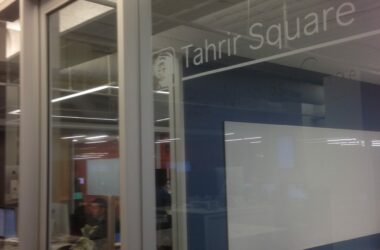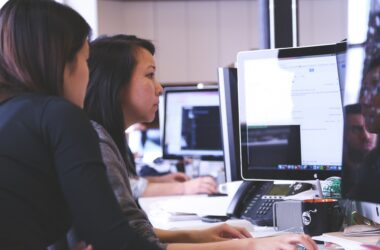It is now month 5 of Bay Area’s general Shelter-in-Place order, and even as the state and our area looks to reopen, the vast majority of companies who can still have employees operate remotely are still opting for a distributed working arrangement. As building software squarely falls into that category, tech companies around here have preemptively declared their arrangements for remote work1, some through the end of the year, others for as long as they want. Granted, all these proclamations may be nullified later on in Yahoo-style reversals, but right now it certainly feels like a moment for geographically agnostic work arrangements.
To that end, I’ve found it stimulating, as a thought exercise, to speculate about where this all ends up. For me and the startup I work for, it’s been a more gradual experience of trial and error, where it feels like we understand the direction we want to iterate towards, but end up foraging an uneven path en route to the destination. To figure out how to export entire teams and businesses to a distributed model, we couldn’t just turn on a dime and reinvent existing processes, cultures and arrangements overnight.
In the early days of the pandemic, there were a number of remote-first companies who were generous enough to share their own experiences and learnings. Since the pandemic forced everyone to have to stay distributed and work from home, it enabled a break from the status quo and forced companies—and their leadership, who now can fully empathize—to set policy. In fact, one of the failure modes towards a persistent remote work culture is reverting back to the a hybrid office + work from home setup when COVID subsides; if all the senior leadership can only be effective when they make daily treks to the office, then role inequities will just go back to disincentivizing remote work.
Assuming that the entire company is onboard, the biggest cultural shift to make seems to be to unwind the thinking around real-time, emergent collaboration. The underlying rationale for open office designs2 is to imbue creativity via spontaneous interactions with coworkers; now social distancing makes such interchanges impossible anyway. People have tried to substitute it with frequent conference calls, only to find that staying on Zoom calls all day is physically and mentally taxing—unsustainable.
So the natural evolution is to move forwards asynchronous modes of communication. In espousing the virtues of long-form writing in the past, it’s not a surprise that I’m a fan; I see it as a tradeoff in reactive speed for deliberate thought. To be fair, moving away from synchronicity can feel like a huge loss in efficiency, so the key distinction is to know when to still engage in real time3 and when to keep an email, a shared document, a comment thread unanswered, to be processed later. It requires understanding and engaging in different modes of communication, which is a remarkably uncommon skill, even for those far along in their careers.
Okay, so suppose workplaces are able to make the adaptation—or end up losing talent to those that are able to navigate these changes—what are then the downstream effects? Now this gets more speculative, and perhaps naively optimistic:
- A flight from the cities. In the context of pandemic shutdowns, cities confer few of their upsides (e.g., bars and restaurants, nightlife) but many of their downsides (e.g., density, high rents, lack of work-from-home space). Indeed, reports suggest that people have been moving away from the most expensive cities, at least in the short term while COVID-19 skews the value equation. At the same time, the availability of remote work lets people stay away from their offices—not only for their current jobs, but if remote work stays prevalent, for other job opportunities as well. Whether distributed work persists may well determine if people stay away from urban areas after the virus subsides.
- The softening and repurposing of commercial real estate. As more workers stay home or move away, it may trigger an oversupply of office space. Right now the cooling effects are hard to disentangle from existing Shelter-in-Place orders, so the real test will be whether occupancy and sublease rates return to pre-COVID trajectories. It’s not unthinkable that we may already have too much offices now, and that in the medium- to long-run, they may convert to something else entirely; after all, lofts came from underused warehouses, initially repurposed in thriftiness before eventually defining its own motif.
- Elevating new work skills. If remote success hinges on new ways to communicate and collaborate, then it stands to reason that those skills will become more important. Techniques like silent meetings and communication-via-shared-documents seem esoteric now, but may well be how teams evolve their working dynamics—optimistically, for the better.
- A more professional home. One of the initial effects of shutting down schools and workplaces was a run on home office equipment: desks, ergonomic chairs, laptops for Zoom classrooms, home internet upgrades. As the demand for office equipment goes down, some of it should resurface as demand for better home office setups. The key will be striking a balance between casual home and professional office use, in quality and cost; perhaps, a new category of prosumer office goods.
- A new balance of work and life. One of the apparent contradictions of this home-work migration is the difference in perception on how much work will be done: managers are concerned that their employees will slack off, while long-time WFH practitioners warn that it’s easy to throw work-life balance out of whack due to the lack of boundaries between the two4. The answer, of course, is that both conditions can be simultaneously true; there were also slackers and workaholics coexisting in the office. The hope here is that teams eventually converge on a set of standards around when and how much to work, emphasizing more independence out of pragmatism and necessity.
Honestly though, I’d be pretty psyched if even one or two of these progress.
I also highly suspect that these PR releases are designed as recruiting beacons.↩
Nevermind that subsequent studies showed the opposite effect; there was still cachet in following modern office designs, plus savings in real estate costs.↩
E.g., “Hop on a call to talk through it.”↩
One effect I’m seeing with COVID lockdowns: people are reluctant to take long vacations since there’s nowhere to go anyway.↩



